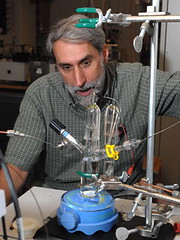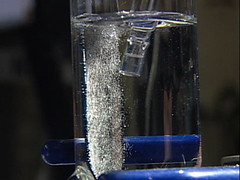
One of the chief complaints about the practicality of solar energy has been: what do you do when the sun isn't shining? MIT researchers have come up with an answer: using a technique similar to that used by plants during photosynthesis. The development of a new catalyst to produce oxygen when an electrical current is passed through water, working in combination with another catalyst that produces hydrogen gas, becomes a powerful mechanism for charging fuel cells. This stored energy can be released as needed, a virtually carbon-free source of electricity that is available day or night.

As quoted in an article for the MIT News by Anne Trafton, Daniel Nocera, the Henry Dreyfus Professor of Energy at MIT, who has co-authored a paper on this discovery for the July 31, 2008 issue of Science, sees this as a landmark advance in energy production.
"This is just the beginning," said Nocera, principal investigator for the Solar Revolution Project funded by the Chesonis Family Foundation and co-Director of the Eni-MIT Solar Frontiers Center. "The scientific community is really going to run with this."
Nocera hopes that within 10 years, homeowners will be able to power their homes in daylight through photovoltaic cells, while using excess solar energy to produce hydrogen and oxygen to power their own household fuel cell. Electricity-by-wire from a central source could be a thing of the past.
Nocera also points out that the amount of sunlight that strikes the Earth in one hour is sufficient to supply the energy needs of the entire planet for a year.
In a video post on the MIT site, Nocera talks more about the potential of this new process.